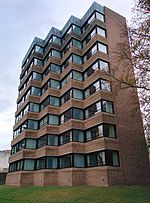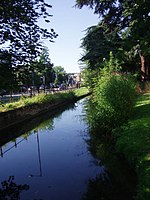The Leys School
1875 establishments in EnglandBoarding schools in CambridgeshireEducational institutions established in 1875Member schools of the Headmasters' and Headmistresses' ConferenceMethodist schools in England ... and 4 more
People educated at The Leys SchoolPrivate schools in CambridgeshireSchools in CambridgeUse British English from February 2023

The Leys School is a co-educational private school in Cambridge, England. It is a boarding and day school for about 574 pupils between the ages of eleven and eighteen, and the head is a member of the Headmasters' and Headmistresses' Conference.
Excerpt from the Wikipedia article The Leys School (License: CC BY-SA 3.0, Authors, Images).The Leys School
The Fen Causeway, Cambridge Newnham
Geographical coordinates (GPS) Address Website External links Nearby Places Show on map
Geographical coordinates (GPS)
| Latitude | Longitude |
|---|---|
| N 52.1965945 ° | E 0.1203697 ° |
Address
The Leys School
The Fen Causeway
CB2 7AD Cambridge, Newnham
England, United Kingdom
Open on Google Maps








